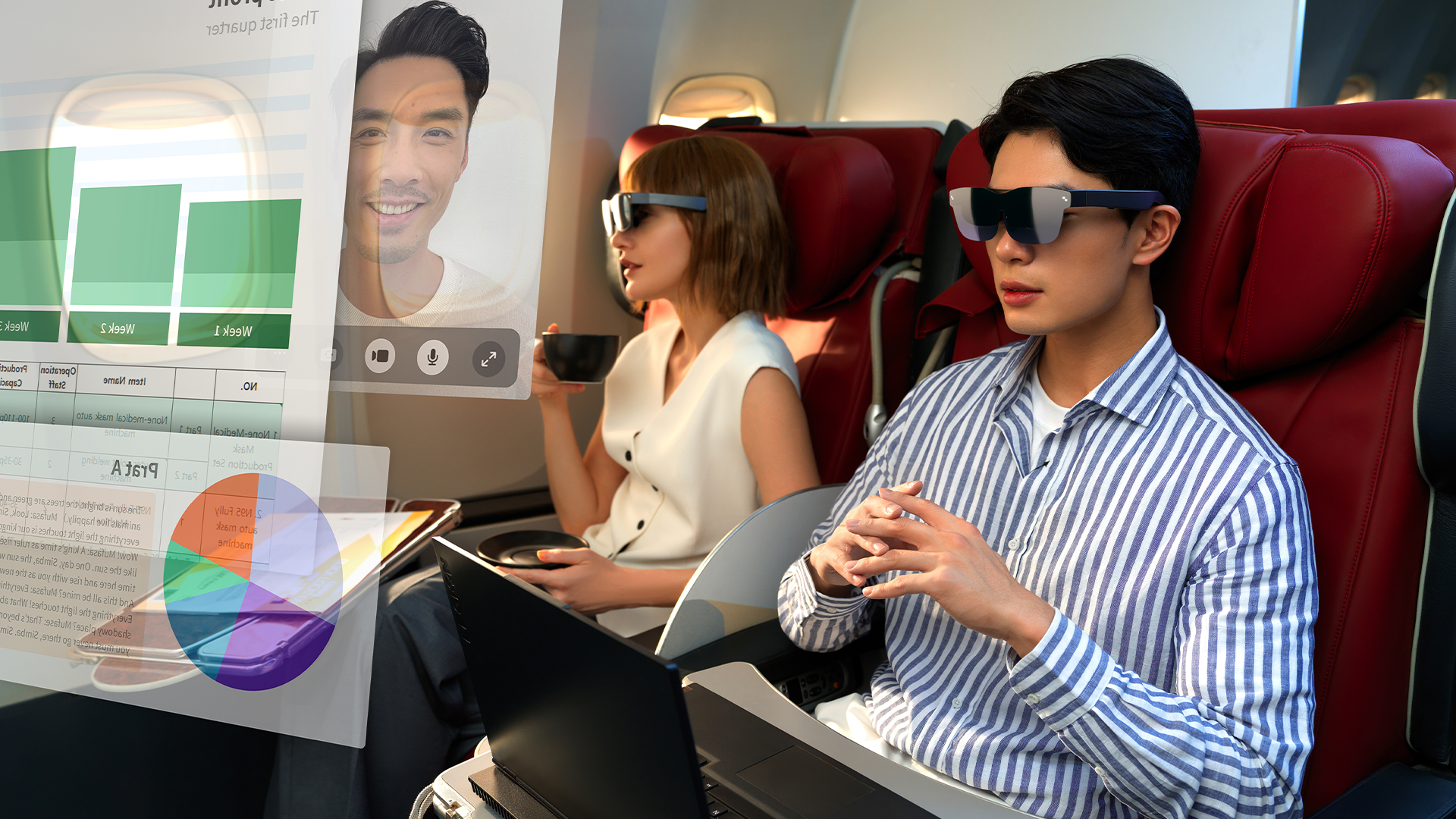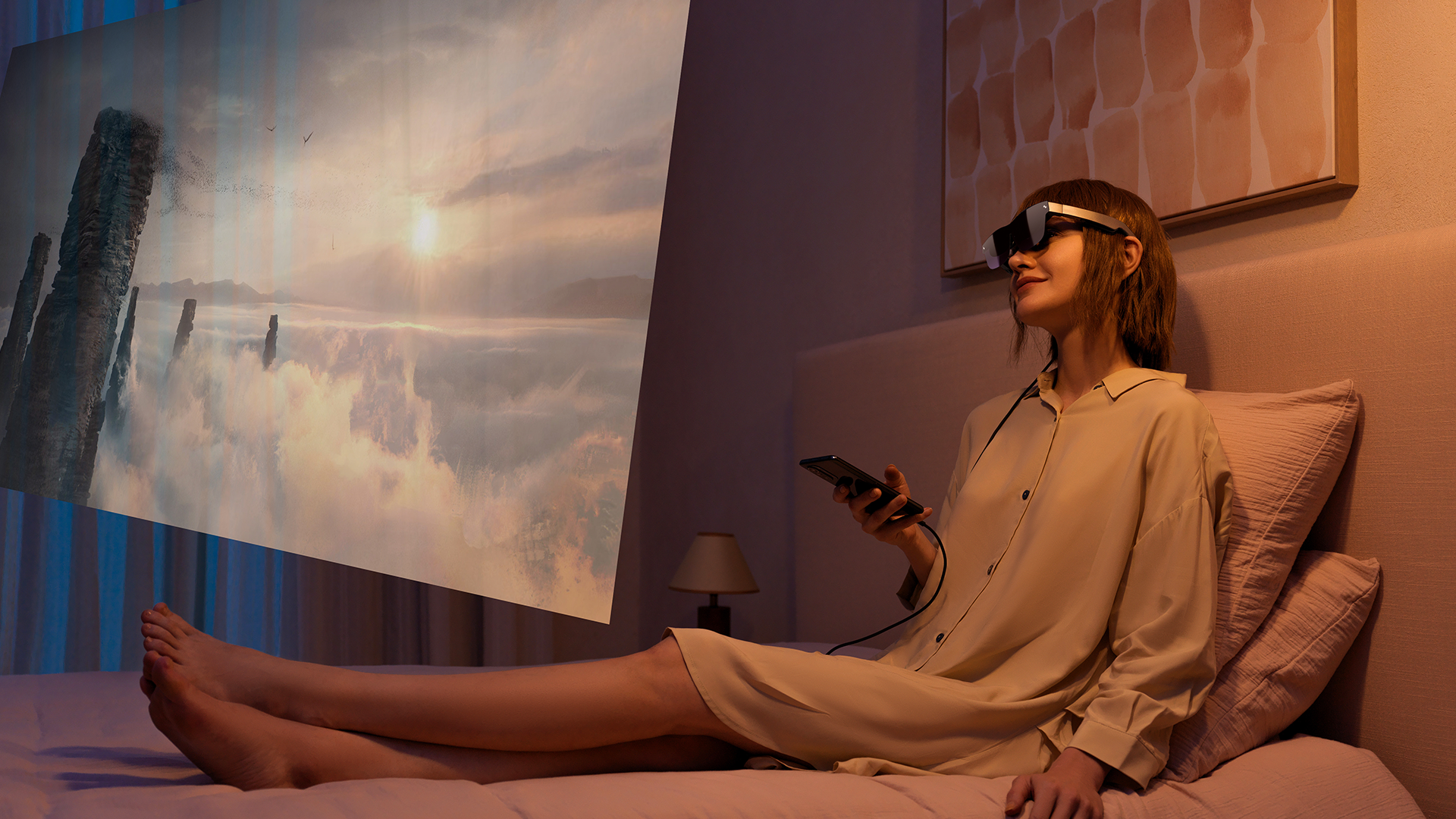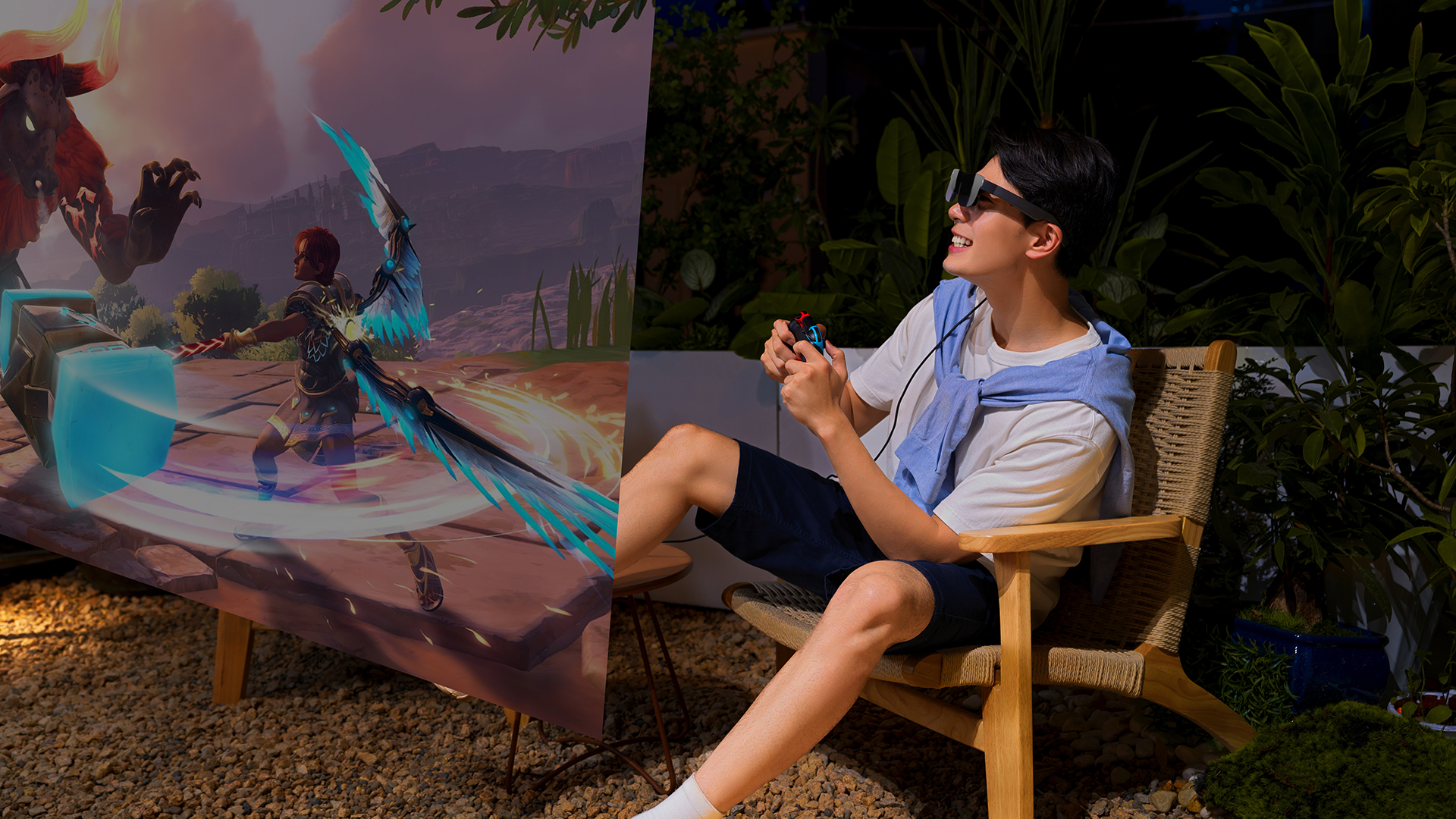From Real Reviews by The Gamer.
I’m always on the move. Whether I’m heading on work trips to see game developers or taking a train to the other end of the country for a week of hiking, I need to entertain myself on the go. Thanks to the dismal battery life of both my Steam Deck and Nintendo Switch – both great devices in their own rights – I’ve taken to packing my Nintendo 3DS instead.
While I enjoy the blast from the past that my 3DS gives me and revel in the opportunity to replay Pokemon SoulSilver any chance I get, sometimes I want to play more modern games. Or watch a movie, perhaps.

That’s where the RayNeo Air 2S comes in. A pair of bulky sunglasses that would make the Blues Brothers blush, they hide tiny projectors that turn the lenses into enormous TV screens.
First impressions are good. The box has a premium feel, and the majority of the packaging is recyclable. The glasses themselves are incredibly light – 78g I’m told – which makes them feel a little cheap, but feels great on the face. You don’t want a VR headset strapped to your head while sitting on the commuter train, do you?
Setup has the opposite effect. A testament to frustration, plugging the RayNeos into two phones (Google and Honor respectively) and a laptop (MSI) didn’t work. Downloading an app was required, but still the glasses refused to connect. The user manual is barebones, showing you the ‘on’ button, where to plug your cables in (the one USB-C port, surprisingly enough), and little else.
After hours of trial and error, the glasses refused to connect. However, RayNeo also provided me with its Pocket TV, which worked right away. The box itself is around the size of a stubby TV remote, and works exactly like one when plugged into the XR glasses. It’s a kind of Chromecast-type scenario, on which you can login to your YouTube, Amazon Prime, Apple TV, and Netflix accounts to watch your favourite shows on the move. It’s a great system that looks good, but it’s a shame the sound doesn’t live up to it.
Despite the upgraded four built-in speakers from the base model, the sound still isn’t quite there. It’s tinny, lacks bass, and is audible by people next to you even on Whisper Mode (which also makes it sound worse to you). If you want to be a part of the XR revolution, make sure you bring some Bluetooth earbuds.
My colleague Eric Switzer has already sung the praises of XR gaming, especially when connected to a Steam Deck, so I won’t repeat him here. The Air 2S thankfully connects well to the Steam Deck, and the 120Hz frame rate means things run smoothly. However, it has the same pitfalls as watching TV: most notably the poor sound quality. If you’re on the move, you’ve got the Steam Deck’s battery to contend with, too.
The RayNeo Air 2S has other uses, but I couldn’t test any of them. You can mirror your desktop setup for a projected screen. You can play XR games on your phone, games which utilise the augmented reality aspect of the glasses. However, the technology clearly isn’t quite ready yet. There’s issues with connectivity and audio, and the instructions and tutorials are practically nonexistent. With a few upgrades and better onboarding, XR glasses could be the future of on-the-go entertainment. But they’re not ready yet.





